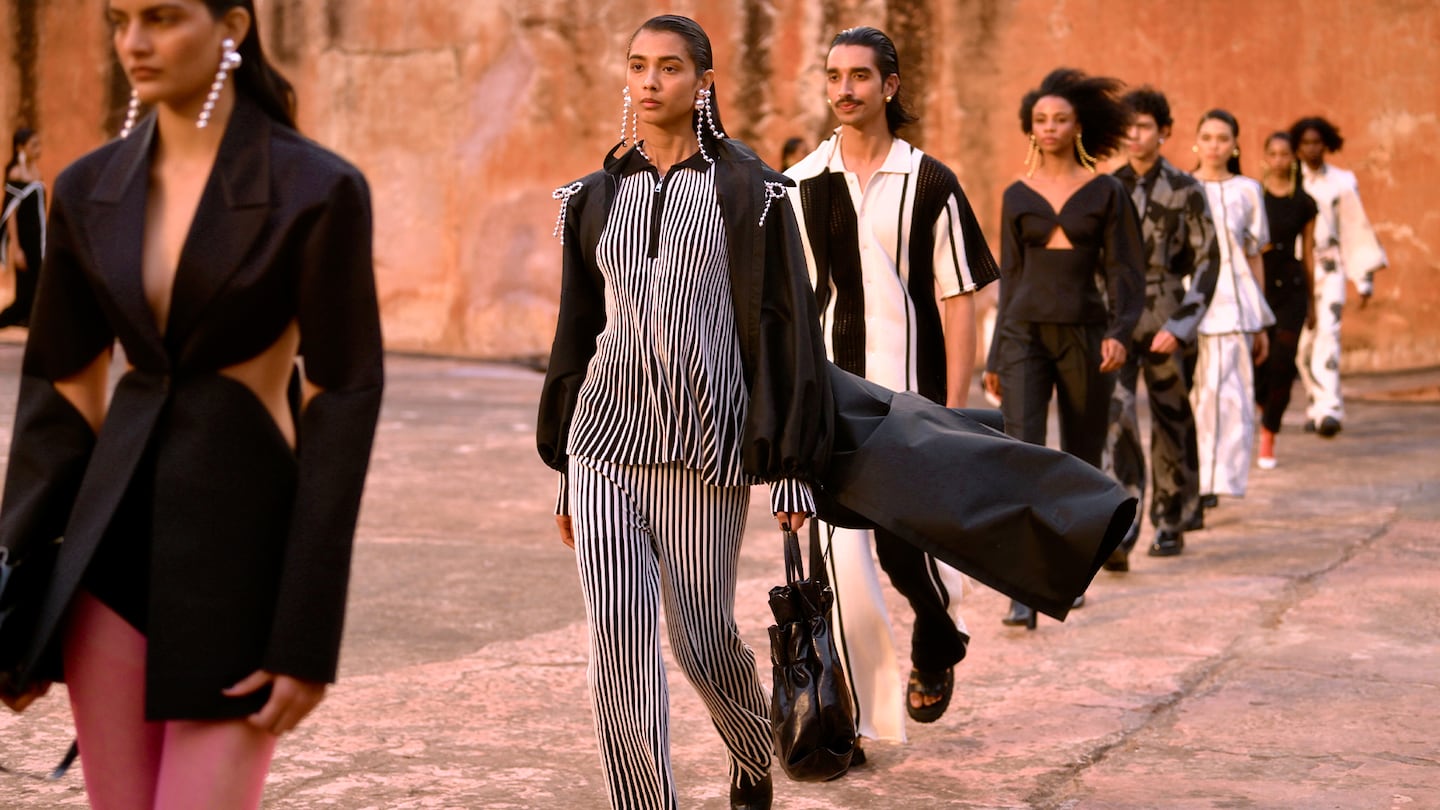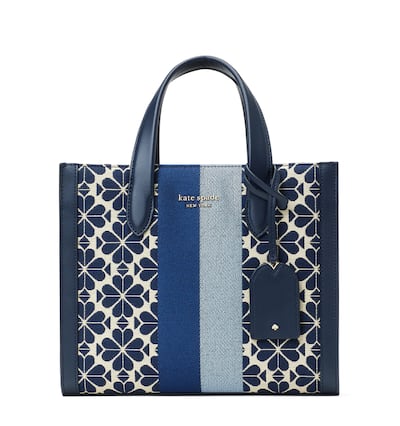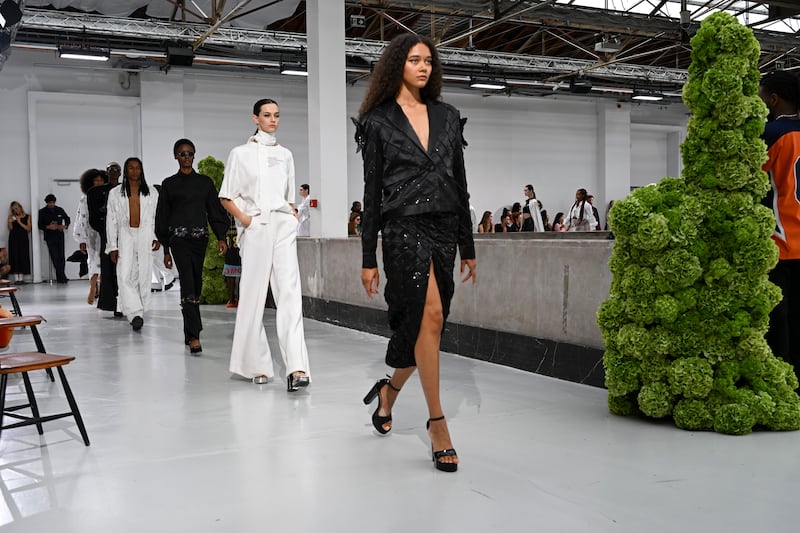
The Business of Fashion
Agenda-setting intelligence, analysis and advice for the global fashion community.

Agenda-setting intelligence, analysis and advice for the global fashion community.

When the company behind Sandro and Maje announced that the French accessible luxury brands will enter India this year, it strengthened the narrative that India’s dynamic fashion market presents global brands with opportunities beyond the pure luxury segment.
“There aren’t a lot of accessible luxury fashion labels in India so we think it’s time to be pioneering,” Isabelle Guichot, chief executive of SMCP, the Paris-based holding company behind Sandro, Maje, Claudie Pierlot and De Fursac brands, told Reuters in November.
Guichot confirmed to BoF that the company is targeting the second half of 2024 for the opening of its first stores in Mumbai and New Delhi, followed by outposts in Bengaluru, Kolkata and potentially other cities in the coming years, supplementing the physical network with a digital presence.
“India is a high potential market [with]…very unique [potential] for our brands as Indian consumers are optimistic, confident and educated,” said Guichot.
ADVERTISEMENT
The entry of two of the most emblematic brands in the accessible luxury category — a segment where local prices for ready-to-wear typically range between 10,000 and 200,000 rupees ($125 to $2,400) — is bound to inspire others to place their bets.
Though still nascent, the market does count a handful of well-known players from foreign shores thanks to the efforts of local joint-venture partners.
Sandro and Maje have partnered with Reliance Brands Limited (RBL), a unit of Mukesh Ambani’s telecoms-to-energy conglomerate Reliance Industries, whose subsidiaries not only have distribution deals with luxury giants like Valentino and Balenciaga but also more affordably priced brands including Tory Burch, Diesel and Kate Spade. Reliance’s Ajio Luxe e-commerce platform sells other brands that straddle the same pricing bracket such as Cult Gaia and Farm Rio.
The competitor landscape also features accessible luxury and advanced contemporary labels available at India’s multi-brand retailers like Le Mill in Mumbai, where collections from Australian labels including Aje, Acler and Zimmermann are stocked alongside its roster of higher-end international brands and western wear from Indian brands.
Arguably, the most established player operating across the value segments that overlap with accessible luxury is Aditya Birla Fashion & Retail Ltd (ABFRL)’s 15-year-old multi-brand retailer The Collective. Selling over 85 brands at its network of 14 stores nationwide, the chain offers diffusion brands such as Polo Ralph Lauren and Versace Jeans Couture and accessible menswear like Fred Perry.
There is also the impending launch of French department store chain Galeries Lafayette in Mumbai and Delhi, which will only add more variety into the mix.
Amit Pande, business head of The Collective and international brands at ABFRL, believes that the local market for accessible luxury and contemporary fashion is poised to hit a growth spurt. “[It’s] just about to take off [and] it’s going to go a long distance,” he said.
This view is supported by forecasts from Boston Consulting Group India.
ADVERTISEMENT

“[Growth] in the accessible luxury segment [in India is] expected to be in the teens over the next five year [period],” said Abheek Singhi, the firm’s senior partner and managing director, citing a compound annual growth rate (CAGR) range of 13-19 percent from 2024 to 2029.
Who will be driving this boom? A diverse mix of consumer cohorts.
While India’s first-time luxury consumers may be more drawn to entry level items from top luxury brands, like handbags and accessories, seasoned luxury shoppers are confident enough to introduce lower priced contemporary fashion into their wardrobes, complementing their mainstay of pure luxury clothing.
Overall luxury goods spending by Indian consumers is expected to more than triple between 2022 and 2030, reaching €25 to €30 billion ($27 to $32 billion), according to Bain & Company. The main driver is India’s swelling population of high net-worth individuals (those with investable assets of $1 million) which is forecasted to increase by 56.6 percent between 2022 and 2027 according to the Knight Frank’s 2022 Wealth Report, bringing the number of millionaires from 796,961 to 1,407,287.
Another client base for accessible luxury players is the income group sandwiched between the mass market and luxury pricing brackets.
According to a January report by investment bank Goldman Sachs, the cohort of affluent Indians — identified as those with a per capita income exceeding $10,000 — is set to soar from the current 60 million to 100 million by 2027. One of the largest beneficiaries of this, the research finds, will be premium brands.
But the affluent aside, there is another group brands should look at seriously: upwardly mobile consumers looking for an upgrade in life, and by extension, their wardrobes.
“Considering how globally well-positioned these brands are, they already enjoy enough awareness and clout to pull in the aspirational, upper middle-class consumer, which will eventually account for a huge chunk of the market for them,” said independent luxury advisor Deepika Gehanai who has over two decades in the industry, and was co-founder of Genesis Luxury, a company that introduced brands like Jimmy Choo and Armani to India, before it was acquired by Reliance in 2018.
ADVERTISEMENT

As Indian consumers’ preferences move from logo-heavy clothing towards more sophisticated, design-led pieces, the market is making space for newer players, confirms Pande. The main gap that needs to be filled is variety but the players who are most likely to succeed will account for local cultural context and body types.
Gehani says brands are beginning to see the merits of thinking beyond just fast-moving accessories to widen their clothing offering — which has traditionally been relegated to a few racks and a handful of styles for the Indian market. “The appetite exists. One just needs to put food on the table,” she said.
For instance, Jasmin Larian Hekmat, chief executive of Cult Gaia admits that handbags remain the highest-selling category compared to footwear and ready-to-wear in India. But she believes that the colour- and craft-appreciating Indian audience now represents a unique opportunity for the brand’s clothing three years after it entered the market through Ajio Luxe.
International brands entering the market won’t just be competing with one another. India is already home to many homegrown labels servicing the same segment. Brands like Pero, Dhruv Kapoor, Kanika Goyal, Lovebirds and Bodice all offer western silhouettes in the accessible luxury price bracket at retailers across India, while maintaining a cosmopolitan profile thanks to overseas stockists and fashion week appearances.
Another group of local competitors in the space are the Indian designers and couturiers who have launched sub-brands, diffusion lines and adjacent brands with lower prices. These include lines by the likes of Tarun Tahiliani, Anamika Khanna, Falguni Shane Peacock, Ritu Kumar, Payal Singhal and Karishma Swali’s Moonray.
Last year, Indian couturier Rahul Mishra debuted his lower-priced ready-to-wear line AFEW Rahul Mishra at Paris Fashion Week. The brand’s selection of dresses, co-ordinated sets, jackets and T-shirts are priced between 20,000 and 80,000 rupees ($240 to $950). Mishra suggests that foreign brands in the accessible luxury segment inevitably share their clients with the likes of his new line.
“[Indian shoppers] may choose products from French or Italian brands one day and opt for a homegrown brand like ours on another depending on their daily lifestyle or specific events,” he said.
“Connecting with Indian consumers on a personal level is crucial. Filling a void in their wardrobe with not just quality and uniqueness, but also through storytelling, service and other distinctive elements is essential for success in the accessible luxury contemporary wear segment in India,” he added.
Aneeth Arora, whose brand Pero retails ready-to-wear between 15,000 and 100,000 rupees ($180 to $1,200), agrees. “They will not give up on one over the other,” she said. “We operate in a niche, and people who have developed a taste for it, may not find that product elsewhere.”
Instead, Arora believes that the entry of global brands will serve as a great equaliser. “We offer handmade luxury and are unapologetic about our pricing. As more international brands come in, Indian consumers will have a benchmark for comparisons.”

The bigger challenge for brands like Arora’s — and arguably for most global brands in this segment too — is jostling for sales in a country that tends to reserve its higher spends for traditional occasion and festive wear. “To sell them daywear at similar prices, even if they fall in the luxury category, is not easy. Very few Indian contemporary wear brands have managed to survive without venturing into some form of wedding wear,” she concedes.
Market experts, though, are optimistic about an incoming change, and foresee great potential for contemporary everyday wear thanks to the rise in more informal special occasions. Gehani identifies wardrobes that work for everything “from birthdays and baby showers to dinner parties and holidays” where the sweet spot for pricing is between 25,000 and 50,000 rupees ($300 to $600).
“Women are really dressing up for [such occasions] far more than they were even five years ago,” said Gehani, adding that accessible luxury players can capture demand from customers of all age brackets, if they are smart about dishing out a versatile offering.
Brands like Dior and Valentino are banking on India’s high growth potential, but it will take more than dazzling shows and sleek stores to turn this complex market into a major revenue source.
Demand for luxury goods is growing in the southern city of Bengaluru, but brands must get to grips with the tech hub’s unique demographic mix to make the most of this boomtown.
This week’s round-up of global markets fashion business news also features Latin American mall giants, Nigerian craft entrepreneurs and the mixed picture of China’s luxury market.
Resourceful leaders are turning to creative contingency plans in the face of a national energy crisis, crumbling infrastructure, economic stagnation and social unrest.
This week’s round-up of global markets fashion business news also features the China Duty Free Group, Uniqlo’s Japanese owner and a pan-African e-commerce platform in Côte d’Ivoire.
Affluent members of the Indian diaspora are underserved by fashion retailers, but dedicated e-commerce sites are not a silver bullet for Indian designers aiming to reach them.